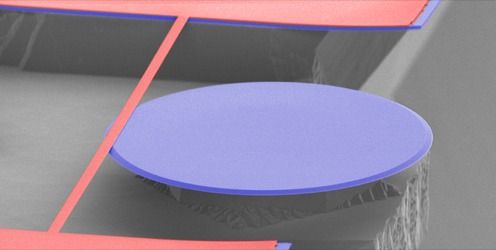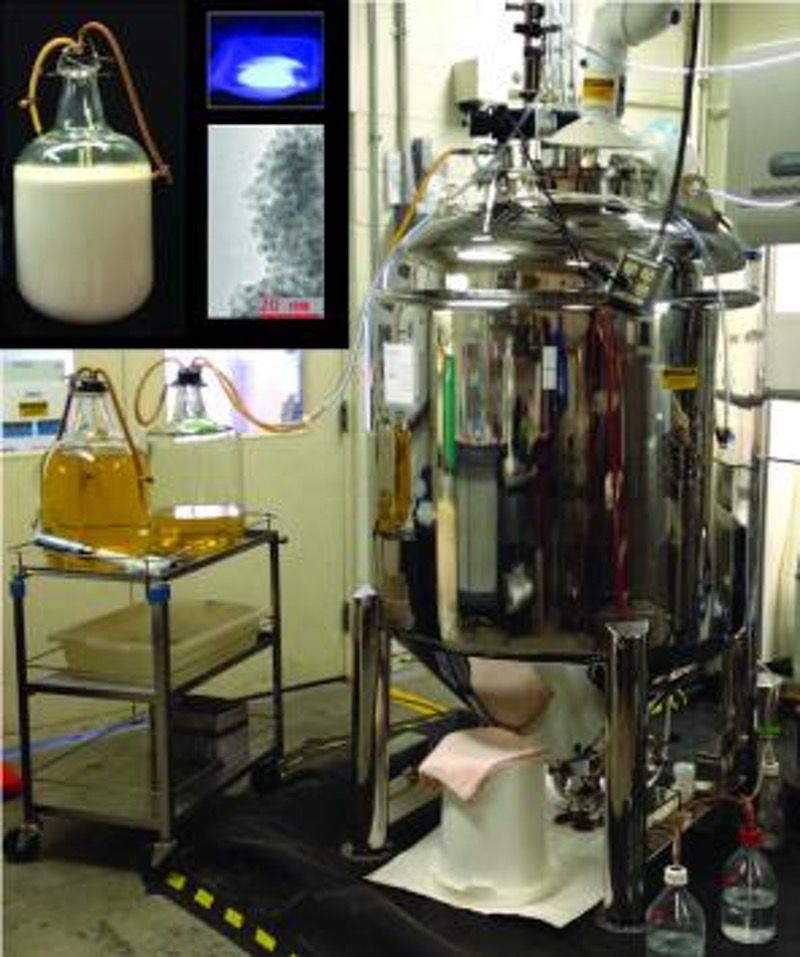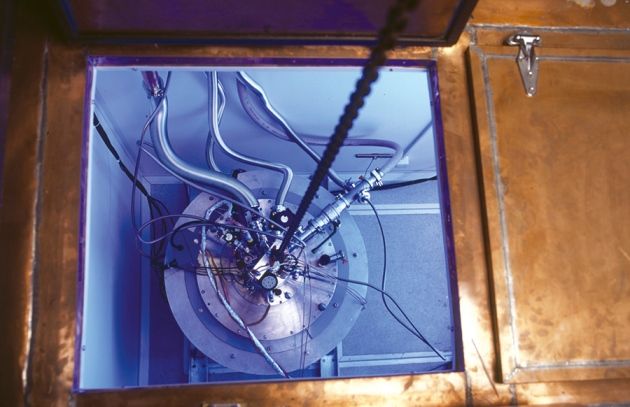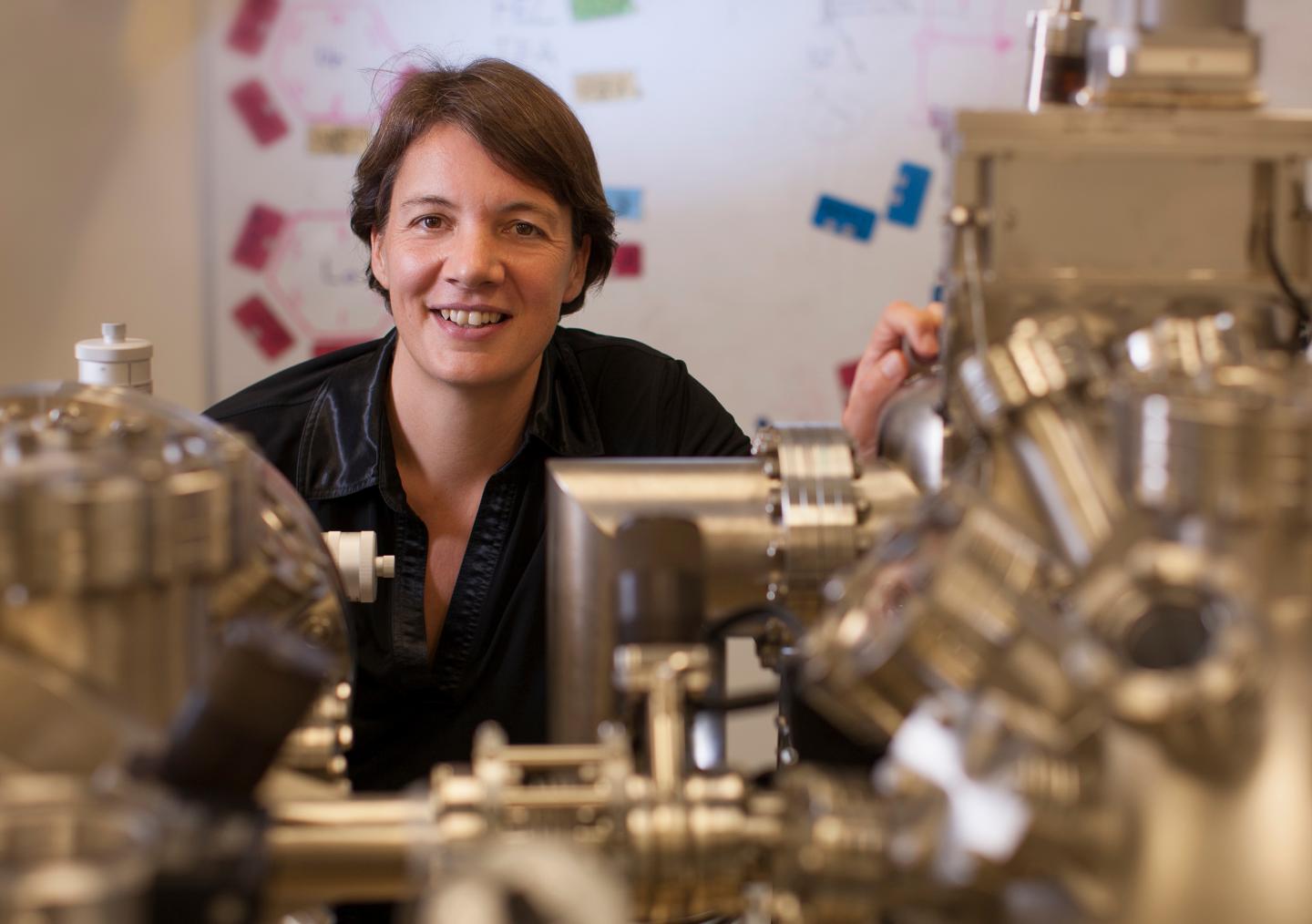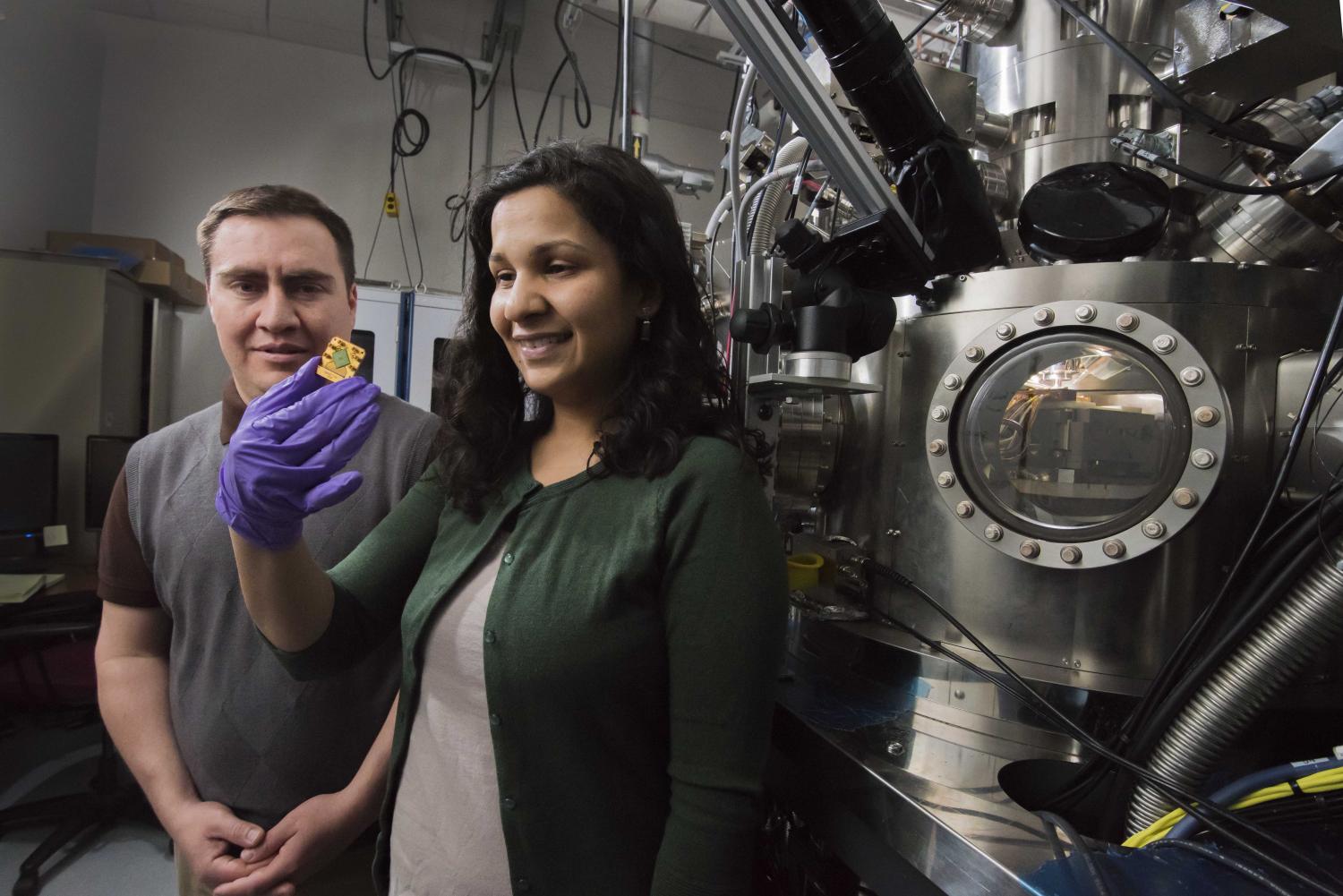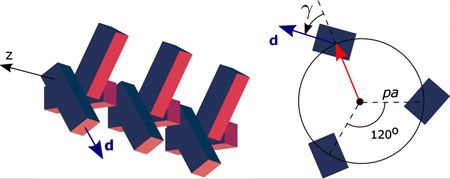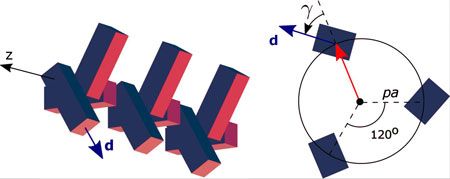The light field from a microcavity can be used to measure the displacement of a thin bar with an uncertainty that is close to the Heisenberg limit.
Tracking the exact location of an object is important in gravitational-wave detectors and optical cooling techniques. However, quantum physics imposes certain limits on the measurement precision. Tobias Kippenberg and his colleagues at the Swiss Federal Institute of Technology in Lausanne have devised an optomechanical device that measures the displacement of a tiny vibrating bar at room temperature with an uncertainty near the so-called Heisenberg limit. The precision of the sensor is nearly 10,000 times smaller than the zero-temperature fluctuations (zero-point motion) of the bar.
The Heisenberg uncertainty principle says—in practical terms—that any measurement of an object’s position will unavoidably give it a push that disturbs its momentum. To minimize this backaction, researchers have developed systems that couple the position of an object with the light field from an optical cavity.
